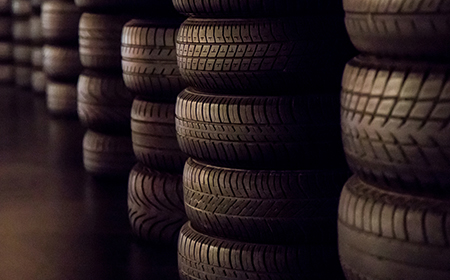To help consumers evaluate their tires, the U.S. National Highway Traffic Safety Administration (NHTSA) created the Uniform Tire Quality Grading System (UTQG). The UTQG makes it possible to compare tires based on a standardized rating of treadwear, traction, and temperature resistance. The grade for each of these can be found on the side of your tire. Winter tires and certain light truck tires are not graded.
Treadwear
The UTQG treadwear grade indicates how long your tire tread will last in relation to other tires. For instance, a tire with a grade of 400 should last twice as long as a tire with a grade of 200. It is important to remember that the treadwear number in the UTQG rating is a relative number only, and actual tire performance can differ greatly for many reasons, including driving style, climate, tire inflation and vehicle weight.
Traction
The UTQG traction grade rates the ability of your tire to stop on wet pavement. Traction performance is given one of the following grades, which you will find on the sidewall of your tire: AA, A, B, C.
Tires with an AA grade stop faster on wet pavement than those with a C grade. Note that the UTQG traction tests do not test tires for cornering, acceleration, driving at high speed or driving on dry roads. Tires are tested for straight ahead braking only.
Temperature
The UTQG temperature grade indicates the ability of your tire to dissipate the heat generated by driving. This is an important measure since over time, heat can cause damage to your tires. Temperature resistance is given one of the following grades, which you will find on the sidewall of your tire: A, B, or C. All tires sold in the United States must have at least a C rating.
The tires in UTQG tests were inflated properly and the vehicles were not overloaded. Excessive heat can be produced by under-inflation of your tires, driving at high speed, driving an overloaded vehicle, and certain road and weather conditions.
